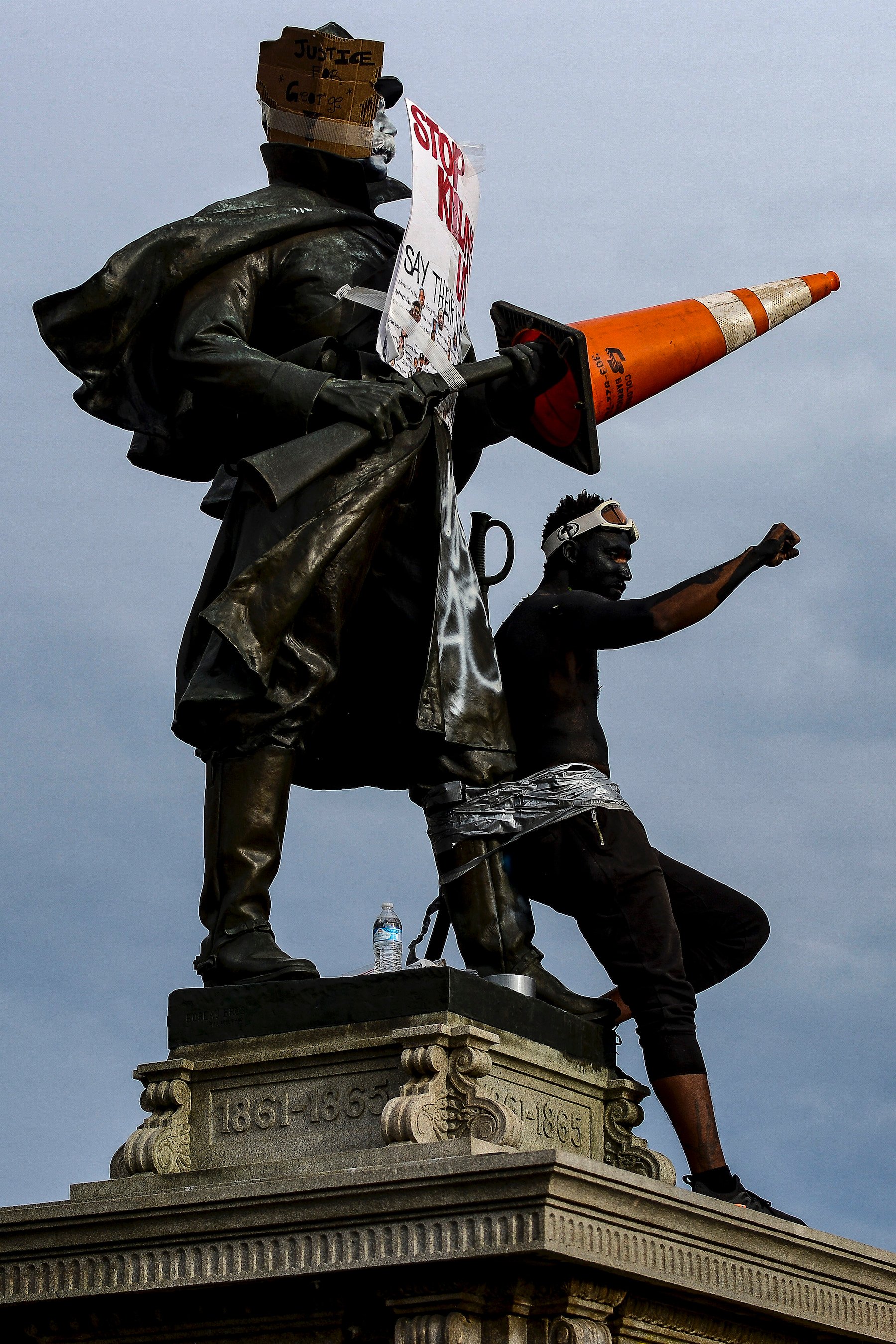
Representatives in Denver, Colorado, have voted to replace a Civil War statue that was toppled over the summer during Black Lives Matter protests with a sculpture of a Native American woman in mourning. The new statue will stand as a memorial to the horrific 1864 Sand Creek Massacre, when 675 volunteer US soldiers attacked a village of Cheyenne and Arapaho people in southeastern Colorado.
The victims, numbering between 70 to 500 people, were primarily women and children. The original statue honoring Colorado soldiers was erected in 1909, and included a plaque commemorating the Sand Creek Massacre, though it first described the standoff as a “battle,” an error which was later amended. Colorado’s Capitol Advisory Committee made its majority decision after hearing from descendants of those killed at Sand Creek, including Otto Braided Hair. “They were wiped out,” he said, “their voices were no longer heard. Those are the people we speak for.”
Cheyenne and Arapaho artist Harvey Phillip Pratt told the committee that the design for the new statue came to him in a dream. “It’s really about the women. The women carry the men in the tribes on their back,” he said, describing the figure of the Native American woman carrying an empty cradle as a symbol of the tribe’s grave loss. “She’s not asking to be spared. She’s saying ‘Remember us. Don’t forget us. I’ve lost my whole family.'” Pratt is a prominent Native artist who also designed the Smithsonian’s National Native American Veteran’s Memorial, which opened in November 2020.
The Civil War Monument before it was toppled in June, 2020, at Colorado’s Capitol. Courtesy of Wikimedia Commons.
The Civil War statue on the west side of the city’s Capitol building was designed by Captain Jack Howland of the First Colorado Cavalry, a regiment that participated in the Sand Creek Massacre. Following the murder of George Floyd in May, monuments across the country were toppled and vandalized for their veneration of racist acts. In late May, a Black man taped himself to the statue as an act of protest, adding signs and covering the tip of his rifle with an orange traffic cone.
The Denver statue depicting a bronze cavalryman clad in a raincoat and armed with a rifle and saber was toppled on June 25, and the monument’s base was covered in colorful spray-painted phrases such as, “DECOLONIZE,” “DEFUND THE COPS,” and “DENVER WHERE ARE YOU!?” After city officials carted off the bronze soldier, it was moved to the History Colorado Center.
A seven-inch prototype of Pratt’s design has been completed, and the Colorado Legislature will vote on how large the finished work and its pedestal will be.